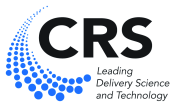Abstract
Geometrical features such as shape and surface area of a drug-releasing matrix affect drug release kinetics by changing diffusion rates across the matrix, lengthening the diffusion pathway through drug–matrix composition or simply presenting a different surface area to the dissolution medium. Such variables can change during the dissolution process, due to drug depletion or erosion or dissolution of release-modifying components. Such phenomena can help the development of novel dosage units since they present opportunities to capitalize on shape and surface effects designing a matrix that optimally delivers drug at the required rate. The historical development and state-of-the-art of geometrically designed dosage forms are presented in this chapter.
Access this chapter
Tax calculation will be finalised at checkout
Purchases are for personal use only
References
Hsieh DS, Rhine WD, Langer R (1983) Zero-order controlled-release polymer matrices for micro- and macromolecules. J Pharm Sci 72(1):17–22
Lee PI (1984) Effect of non-uniform initial drug concentration distribution on the kinetics of drug release from glassy hydrogel matrices. Polymer 25(7):973–978
Feely LC, Davis SS (1988) The influence of polymeric excipients on drug release from hydroxypropyl methylcellulose matrices. Int J Pharm 44(1–3):131–139
Swan EA, Peppas NA (1981) Drug release kinetics from hydrophobic porous monolithic devices. Proc Symp Control Release Bioact Mater 8:18–23
Korsmeyer RW, Gurny R, Doelker R, Buri P, Peppas NA (1983) Mechanisms of solute release from porous hydrophilic polymers. Int J Pharm 15(1):25–35
Colombo P, Conte U, Caramella C, Gazzaniga A, La Manna A (1985) Compressed polymeric mini-matrices for drug release control. J Control Release 1(4):283–289
Colombo P, Gazzaniga A, Caramella C, Conte U, La Manna A (1987) In vitro programmable zero-order release drug delivery system. Acta Pharm Technol 33(1):15–20
Conte U, Colombo P, Gazzaniga A, Sangalli ME, La Manna A (1988) Swelling-activated drug delivery systems. Biomaterials 9(6):489–93
Colombo P (1993) Swelling-controlled release in hydrogel matrices for oral route. Adv Drug Deliv Rev 11(1–2):37–57
Colombo P, Conte U, Gazzaniga A, Maggi L, Sangalli ME, Peppas NA, La Manna A (1990) Drug release modulation by physical restrictions of matrix swelling. Int J Pharm 63(1):43–48
Colombo P, Catellani PL, Peppas NA, Maggi L, Conte U (1992) Swelling characteristics of hydrophilic matrices for controlled release. New dimensionless number to describe the swelling and release behavior. Int J Pharm 88(1–3):99–109
Conte U, Maggi L, Colombo P, La Manna A (1993) Multi-layered hydrophilic matrices as constant release devices (GeomatrixTM Systems). J Control Release 26(1):39–47
Catellani PL, Colombo P, Peppas NA, Santi P, Bettini R (1998) Partial permselective coating adds an osmotic contribution to drug release from swellable matrixes. J Pharm Sci 87(6):726–731
Conte U, Maggi L (1996) Modulation of the dissolution profiles from Geomatrix multi-layer matrix tablets containing drugs of different solubility. Biomaterials 17(9):889–96
Losi E, Bettini R, Santi P, Sonvico F, Colombo G, Lofthus K, Colombo P, Peppas NA (2006) Assemblage of novel release modules for the development of adaptable drug delivery systems. J Control Release 111(1–2):212–8
Strusi OL, Sonvico F, Bettini R, Santi P, Colombo G, Barata P, Oliveira A, Santos D, Colombo P (2008) Module assemblage technology for floating systems: in vitro flotation and in vivo gastro-retention. J Control Release 129(2):88–92
Strusi OL, Barata P, Traini D, Young PM, Mercuri S, Colombo G, Sonvico F, Bettini R, Colombo P (2010) Artesunate-clindamycin multi-kinetics and site-specific oral delivery system for antimalaric combination products. J Control Release 146(1):54–60
Korsmeyer RW, Peppas NA (1984) Solute and penetrant diffusion in swellable polymers. 3. Drug release from glassy poly(HEMA-co-NVP) copolymers. J Control Release 1(2):89–98
Korsmeyer RW, Von Meerwall E, Peppas NA (1986) Solute and penetrant diffusion in swellable polymers. II. Verification of theoretical models. J Polym Sci Polym Phys 24(2):409–434
Lustig SR, Peppas NA (1987) Solute and penetrant diffusion in swellable polymers. VII. A free volume-based model with mechanical relaxation. J Appl Polym Sci 33(2):533–549
Malamataris S, Hatjichristos T, Rees JE (1996) Apparent compressive elastic modulus and strength isotropy of compacts formed from binary powder mixes. Int J Pharm 141(1–2):101–108
Mullarney MP, Hancock BC (2006) Mechanical property anisotropy of pharmaceutical excipient compacts. Int J Pharm 314(1):9–14
Moe DV, Rippie EG (1997) Nondestructive viscoelastic analysis of anisotropy in compressed tablets. J Pharm Sci 86(1):26–32
Author information
Authors and Affiliations
Corresponding author
Editor information
Editors and Affiliations
Rights and permissions
Copyright information
© 2011 Controlled Release Society
About this chapter
Cite this chapter
Colombo, P., Colombo, G., Cahyadi, C. (2011). Geometric Release Systems: Principles, Release Mechanisms, Kinetics, Polymer Science, and Release-Modifying Material. In: Wilson, C., Crowley, P. (eds) Controlled Release in Oral Drug Delivery. Advances in Delivery Science and Technology. Springer, Boston, MA. https://doi.org/10.1007/978-1-4614-1004-1_11
Download citation
DOI: https://doi.org/10.1007/978-1-4614-1004-1_11
Published:
Publisher Name: Springer, Boston, MA
Print ISBN: 978-1-4614-1003-4
Online ISBN: 978-1-4614-1004-1
eBook Packages: Biomedical and Life SciencesBiomedical and Life Sciences (R0)


